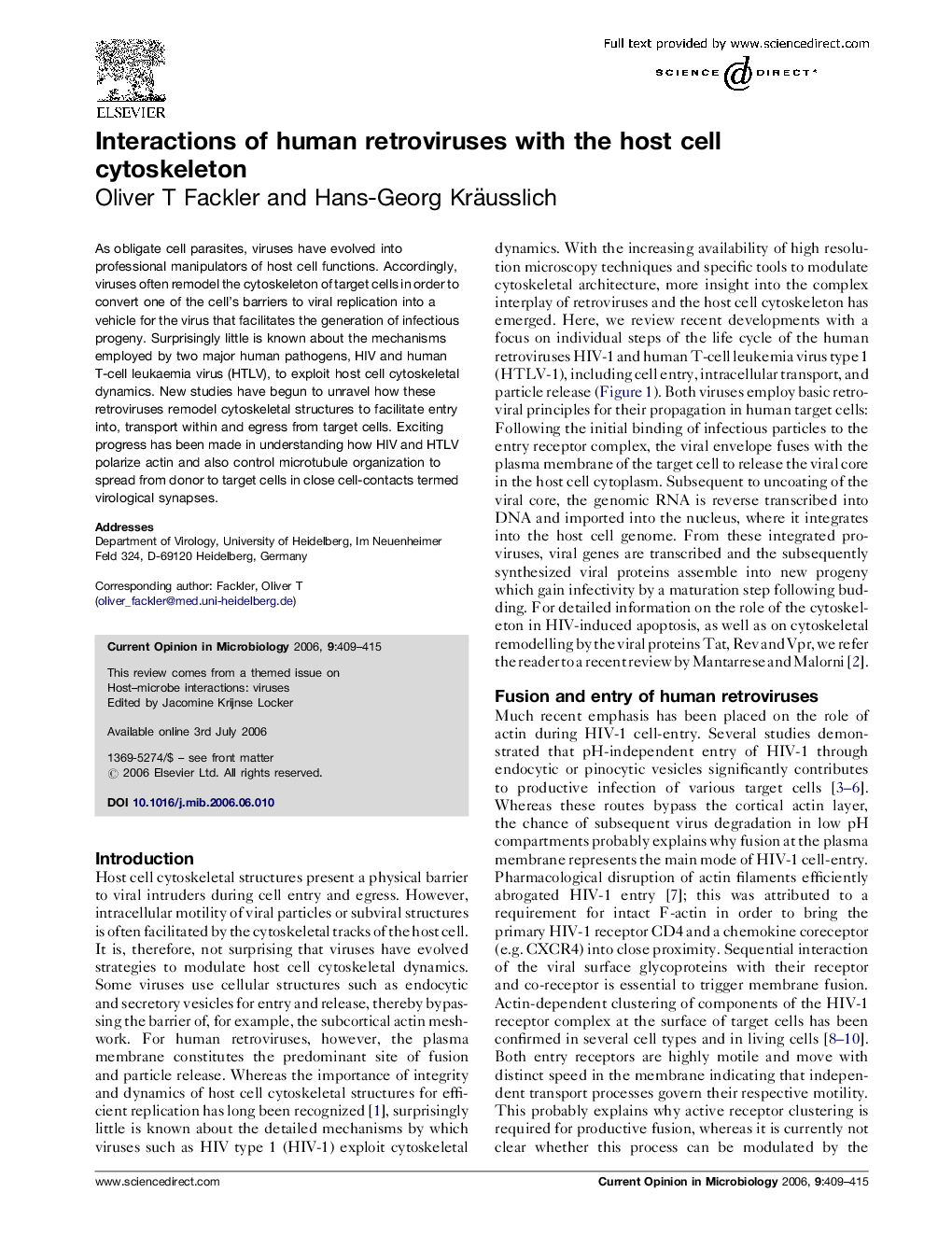| Article ID | Journal | Published Year | Pages | File Type |
|---|---|---|---|---|
| 3399723 | Current Opinion in Microbiology | 2006 | 7 Pages |
As obligate cell parasites, viruses have evolved into professional manipulators of host cell functions. Accordingly, viruses often remodel the cytoskeleton of target cells in order to convert one of the cell's barriers to viral replication into a vehicle for the virus that facilitates the generation of infectious progeny. Surprisingly little is known about the mechanisms employed by two major human pathogens, HIV and human T-cell leukaemia virus (HTLV), to exploit host cell cytoskeletal dynamics. New studies have begun to unravel how these retroviruses remodel cytoskeletal structures to facilitate entry into, transport within and egress from target cells. Exciting progress has been made in understanding how HIV and HTLV polarize actin and also control microtubule organization to spread from donor to target cells in close cell-contacts termed virological synapses.
